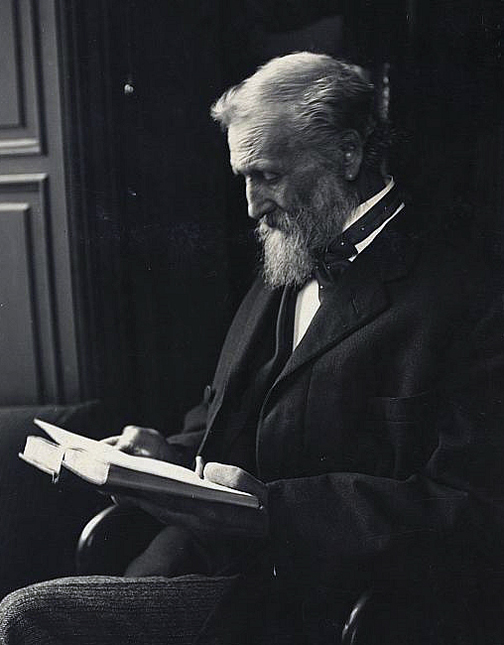attributed to a Muir "autobiographical notebook" in Linnie Marsh Wolfe, Son of the Wilderness: The Life of John Muir (1945), page 144
1870s
John Muir: Cytaty po angielsku
1895, page 350
John of the Mountains, 1938
The Yosemite http://www.sierraclub.org/john_muir_exhibit/writings/the_yosemite/ (1912), chapter 15: Hetch Hetchy Valley
1910s
Terry Gifford, LLO, page 696
1900s, Stickeen (1909)
“No portion of the world is so barren as not to yield a rich and precious harvest of divine truth.”
"Arctic Coal Mines — The Diomede Bay Islands", San Francisco Daily Evening Bulletin (part 18 of 21 part series "Cruise of the Corwin") dated 25 August 1881, published 25 October 1881; reprinted in The Cruise of the Corwin http://www.sierraclub.org/john_muir_exhibit/writings/cruise_of_the_corwin/default.aspx (1917), chapter 17: Meeting the Point Barrow Expedition
1880s
"The Basin of the Columbia River" in Picturesque California (1888-1890); reprinted in Steep Trails (1918), chapter 22
1880s
Terry Gifford, EWDB, page 287
1860s, My First Summer in the Sierra, 1869
letter to Mrs. Ezra S. Carr, from Yosemite Valley (September 1874); published in William Federic Badè, The Life and Letters of John Muir http://www.sierraclub.org/john_muir_exhibit/life/life_and_letters/default.aspx (1924), chapter 11: On Widening Currents
1870s
18 July 1890, page 321
John of the Mountains, 1938
letter http://digitalcollections.pacific.edu/cdm/ref/collection/muirletters/id/9847/show/9846 to Catharine Merrill, from New Sentinel Hotel, Yosemite Valley (9 June 1872); published in William Federic Badè, The Life and Letters of John Muir http://www.sierraclub.org/john_muir_exhibit/life/life_and_letters/default.aspx (1924), chapter 9: Persons and Problems
1870s
" The Fountains and Streams of the Yosemite National Park http://books.google.com/books?id=2CsRAAAAMAAJ&pg=PA556", The Atlantic Monthly, volume LXXXVII, number 519 (January 1901) pages 556-565 (at page 565); reprinted in Our National Parks http://www.sierraclub.org/john_muir_exhibit/writings/our_national_parks/ (1901), chapter 8: The Fountains and Streams of the Yosemite National Park
1900s, Our National Parks (1901)
Terry Gifford, LLO, page 693
1900s, Stickeen (1909)
pages 439-440
("Trees towering … into eternity" are the next-to-last lines of the documentary film " John Muir in the New World http://www.pbs.org/wnet/americanmasters/episodes/john-muir-in-the-new-world/watch-the-full-documentary-film/1823/" (American Masters), produced, directed, and written by Catherine Tatge.)
John of the Mountains, 1938
pages 271-284 (at page 276)
1890s, The National Parks and Forest Reservations, 1895
September 1874, page 191
John of the Mountains, 1938
statement by Muir as remembered by Albert W. Palmer in The Mountain Trail and its Message http://books.google.com/books?id=odROAQAAIAAJ&pg=PA28 (1911), pages 27-28
1910s
June 1890, page 299
John of the Mountains, 1938
1872(?), page 92
John of the Mountains, 1938
memorial volume Edward Henry Harriman http://www.sierraclub.org/john_muir_exhibit/writings/edward_henry_harriman.aspx (1911)
1910s
24 March 1895, page 337
John of the Mountains, 1938
Źródło: A Thousand-Mile Walk To the Gulf, 1916, chapter 5: Through Florida Swamps and Forests, page 151
Terry Gifford, EWDB, page 279
1860s, My First Summer in the Sierra, 1869
Terry Gifford, LLO, pages 686-687
1900s, Stickeen (1909)
“Good walkers can go anywhere in these hospitable mountains without artificial ways.”
letter to Howard Palmer (12 December 1912); published in William Federic Badè, The Life and Letters of John Muir http://www.sierraclub.org/john_muir_exhibit/life/life_and_letters/default.aspx (1924), chapter 17, II
1910s
“Many lawless mysteries vanish, and harmonies take their places.”
Źródło: 1900s, Our National Parks (1901), chapter 9: The Sequoia and General Grant National Parks
The Yosemite http://www.sierraclub.org/john_muir_exhibit/writings/the_yosemite/ (1912), chapter 12: How Best to Spend One's Yosemite Time
Advice for visitors to Yosemite given by John Muir at age 74 years. Compare advice given by the 37-year-old Muir above.
1910s
" Alaska http://books.google.com/books?id=h40OAQAAIAAJ&pg=PA287", The American Geologist volume XI, number 5 (May 1893) pages 287-299 (at page 299)
1910s
“Most interesting forest I have seen in my whole life.”
journal entry http://digitalcollections.pacific.edu/cdm/ref/collection/muirjournals/id/3766/show/3742 (24 October 1911) concerning Araucaria braziliensis in southern Brazil; published in John Muir's Last Journey, edited by Michael P. Branch (Island Press, 2001), page 88
1910s
“I always enjoyed the hearty society of a snowstorm.”
19(?) July 1890, page 321
John of the Mountains, 1938
